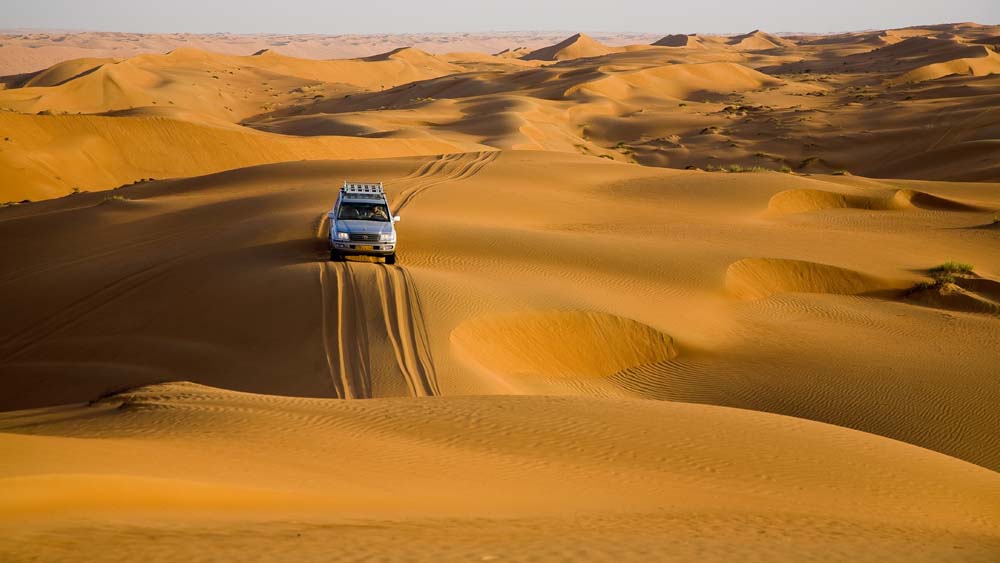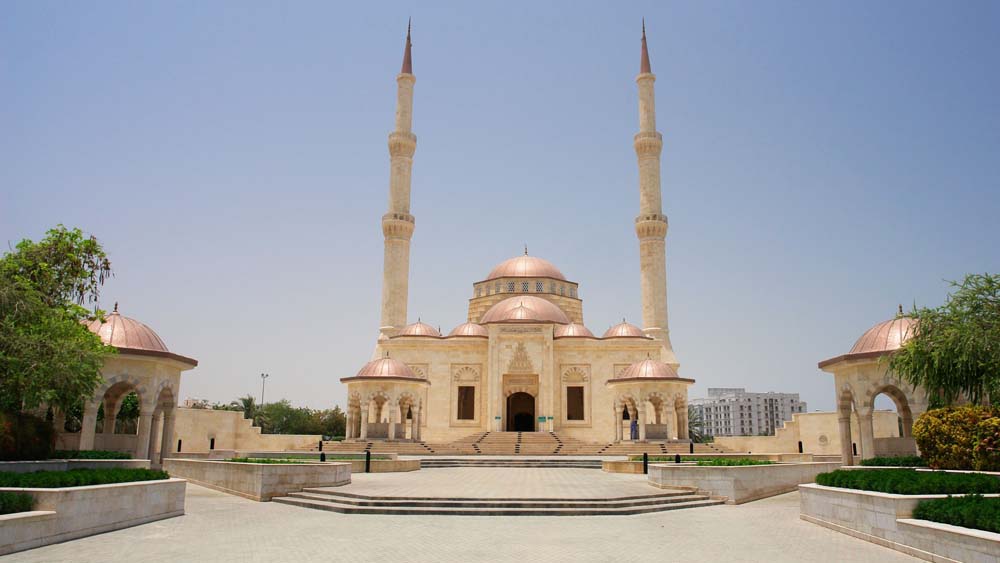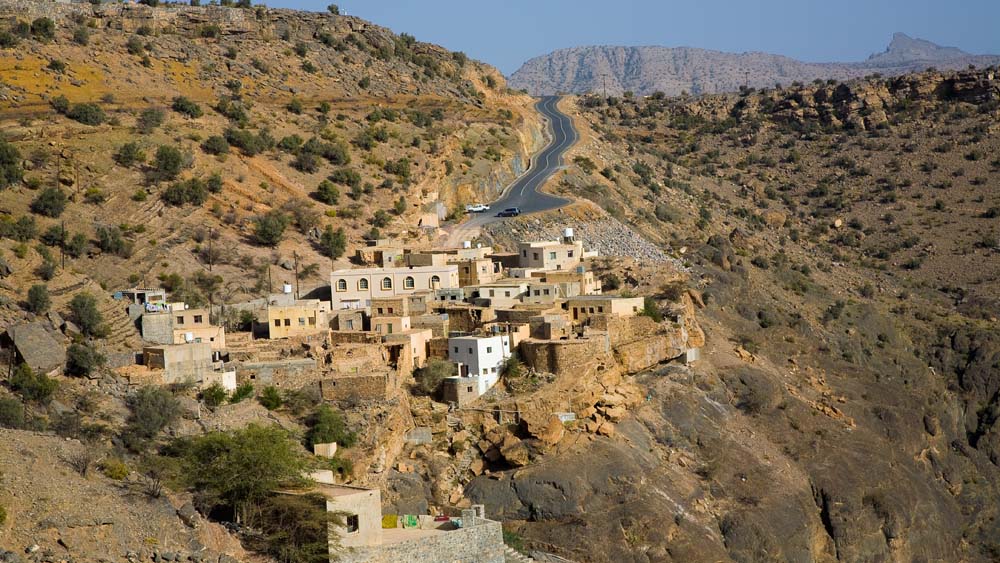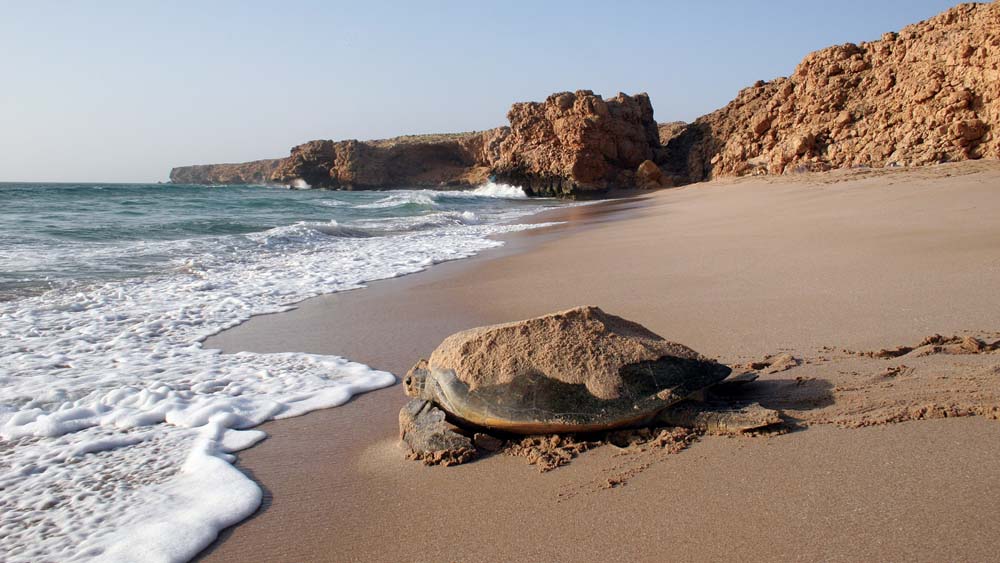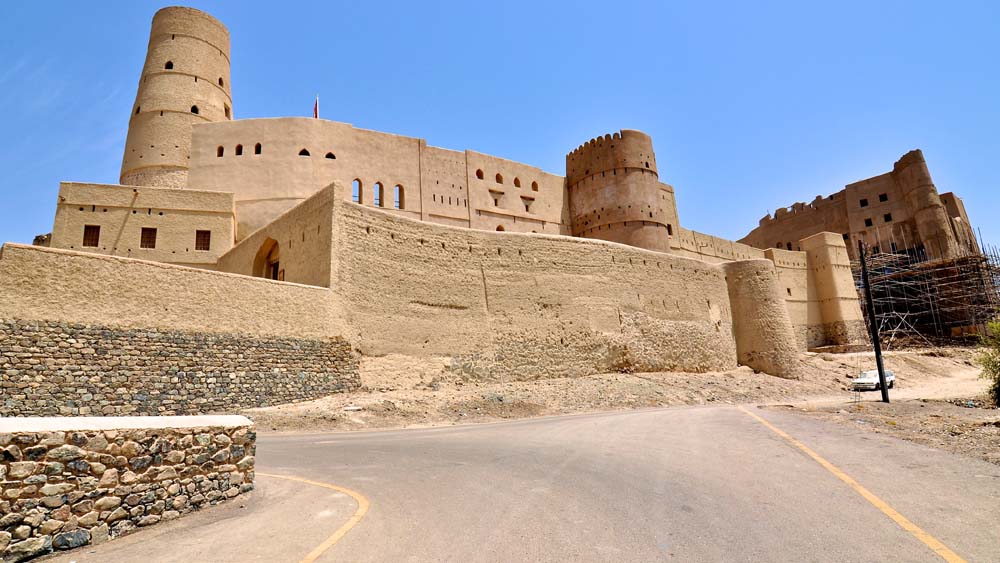Attractive Tourist Places
Jebel Akhdar Villages
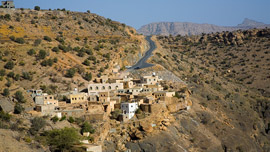
The mountain villages of Oman’s Jebel Akhdar (Green Mountain) are perched precariously on the edge of sheer cliffs and command some of the most memorable views in the country. Here, at an altitude of over 2,000 metres, the climate is much cooler than the rest of Oman and amongst the desolate rock are pockets of ‘mini Edens’ where exotic fruits grow on steep terraced fields – a total contrast from much of the country.
Wahiba Sands
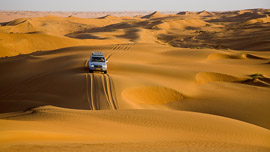
The elegant rippling dunes of the Wahiba Sands are the quintessential image of Arabia for many visitors. Made famous by the explorer Sir Wilfred Thesiger in the 1950s, and covering an area the size of Wales, this enormous sand sea with dunes rising up to 150 metres provides a feast of aesthetically satisfying geometrical designs. The opportunity to spend a night or two in the wilderness and experience the peace of the desert and magnificence of the night sky should not be passed up lightly.
Muscat
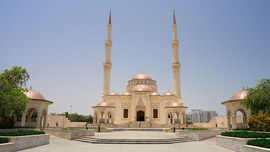
Muscat is one of the most interesting and attractive cities of the Arabian Peninsula and was declared Arab City of Culture for 2012. The heart of the old city is ringed by an amphitheatre of jagged bare rocks and is dominated by two imposing 16th century Portuguese fortresses. Museums housed in old mansions and forts tell the history of Oman, while Muttrah’s souq is packed with the exotic wares of the orient, and the marble clad Sultan Qaboos Grand Mosque presents a magnificent example of modern Islamic architecture. With an afternoon to spare, the chance to take a Dolphin watching cruise is hard to resist.
Wadi Bani Awf
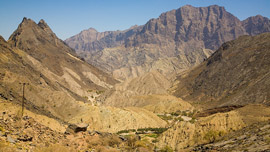
Serpentine Wadi Bani Awf winds dramatically through the Hajar Mountains connecting the coastal Batinah plain with the country’s interior and is widely considered to be the best off-road driving experience in Oman. This rugged mountain valley has incredible mountain scenery and presents stunning photo opportunities almost at every turn. A truly unforgettable drive!
Wadi Nakhr Gorge

Popularly known as the “Grand Canyon” of Oman, Wadi Nakhr cuts dramatically into the belly of Jebel Shams, the highest mountain in the country (3,005 m), and is one of Oman’s great natural wonders. This amphitheatre like chasm plunges down for over a kilometre to the valley floor below and is best viewed either from the observation point high up on Jebel Shams, or from the stunning ‘Balcony Walk’.
Bahla Fort
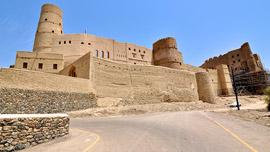
One of Oman’s four UNESCO World Heritage Sites, the pottery centre of Bahla is the site of a hugely impressive, and recently restored, fortress of pre-Islamic origin which attests to the power and ingenuity of the medieval Banu Nebhan tribe. Bahla town is protected by a wall over 8 miles long which was once guarded by a special detachment of slaves.
Ras al-Jinz Turtle Beach
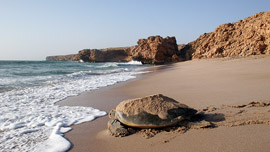
Ras al-Jinz is the most important nesting site of the endangered green turtle (Chelonia mydas) on the Indian Ocean. Here, thousands of turtles return annually to the beach where they hatched to lay their eggs thereby creating what is arguably the finest natural spectacle in Oman. The best time to see turtles laying their eggs is between June and August. September to November are the best months to see both laying and hatching. Turtles arrive at Ras al-Jinz throughout the year but tend to avoid the beach at full moon.
Musandam Fjords
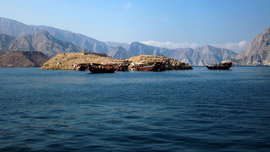
One of the most scenic and least developed areas in Oman, the Musandam Peninsula is known for its spectacular rugged mountains and fjord-like sunken valleys which have led the area to be called “The Norway of Arabia”. One of the great attractions of visiting Musandam is taking a relaxing dhow cruise into Khor ash Sham to explore the dramatic ‘fjord’ with its incredibly sheer cliffs and crystal clear water. The combination of amazing scenery, swimming, and possibly spotting dolphins make this excursion truly unforgettable.
The Frankincense Coast
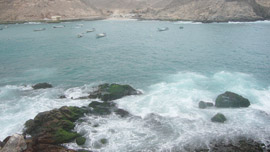
Located some thousand kilometres to the south of Muscat, the southern Omani province of Dhofar is the home of frankincense. Scenically it comes as a great surprise since it catches the southwest monsoon and is very different from northern Oman. Between July and early September, during a season known as the ‘khareef’, coastal Dhofar is almost miraculously transformed into a land with lush pastures, flowing rivers, and waterfalls. Quite unlike any other part of Arabia!
Nizwa Fort
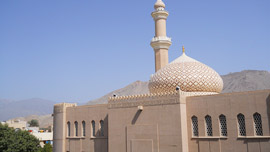
The Nizwa Fort stands as one of the Sultanate’s finest historical edifices. This unique, large earth-filled circular tower of Nizwa is built by Imam Sultan bin Saif al Yaarubi in 1668 AD. It mirrors the military engineering prowess of fort-builders of the olden times.This formidable citadel stood strong and protected Nizwa’s abundant natural wealth from prowlers coveting it.

